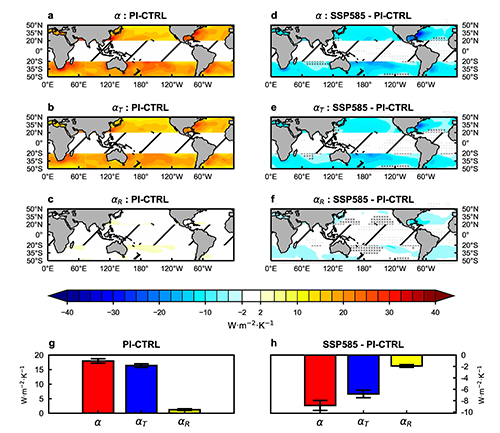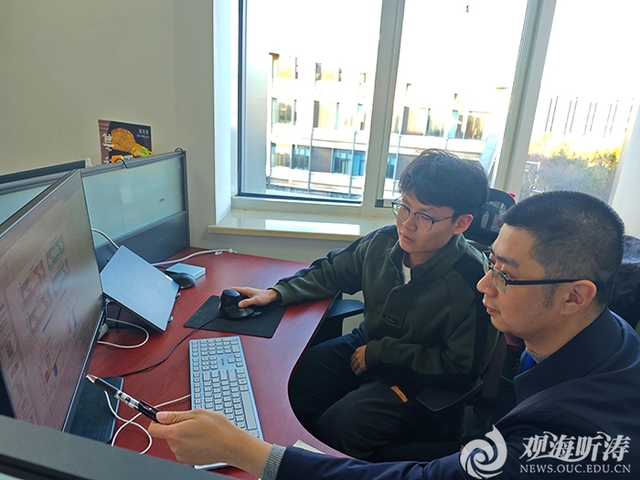The research team from Frontiers Science Center for Deep Ocean Multispheres and Earth System and Key Laboratory of Physical Oceanography, Ocean University of China, has made new progress in understanding the response of air-sea interaction to climate change. They have revealed the impact of global warming on the large-scale sea surface heat flux feedback at midlatitudes and provided a specific explanation for the mechanism. The research outcome, titled Weakened large-scale surface heat flux feedback at midlatitudes under global warming, was published online in Nature Communications.
The surface heat flux feedback is one of the key processes in air-sea interaction. It plays an important role in regulating the intensity and persistence of local sea surface temperature anomaly (SSTA), and also has a significant impact on processes such as the global overturning circulation and major climate modes. Based on the multi-model simulation results of the Coupled Models Intercomparison Project Phase 6, this study analyzed the response of the large-scale sea surface heat flux feedback at midlatitudes to climate warming. The research shows that the intensity of surface heat flux feedback for spatially large-scale SSTA at midlatitudes is projected to halve by the end of the 21st century, compared to pre-industrial levels. Such weakening is primarily attributed to a more stabilized marine atmospheric boundary layer, which diminishes the air-sea thermal disequilibrium caused by SSTA. Further research indicates that the weakening of the sea surface heat flux feedback intensity will lead to an increase in the variance of the large-scale sea surface temperature at midlatitudes.

